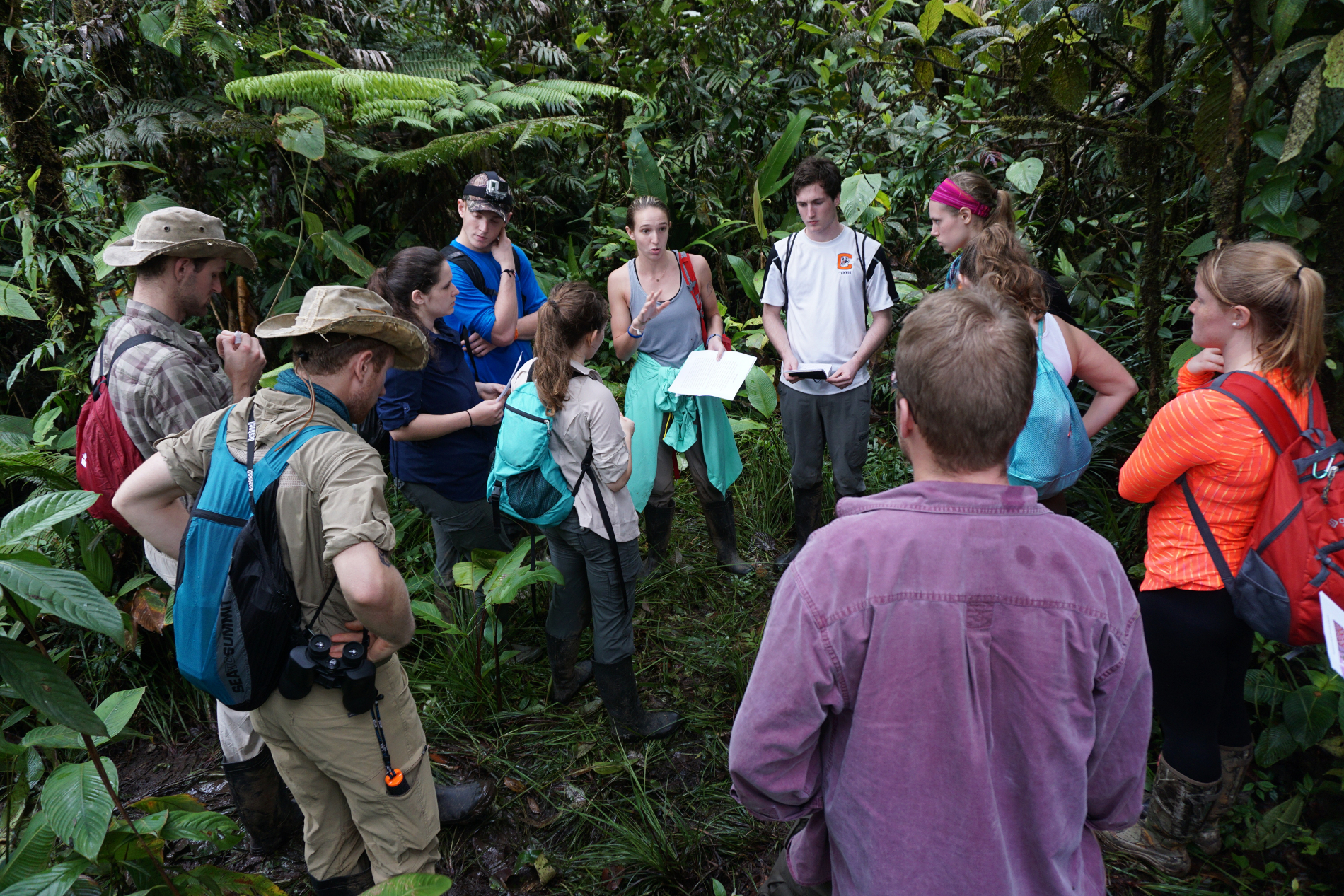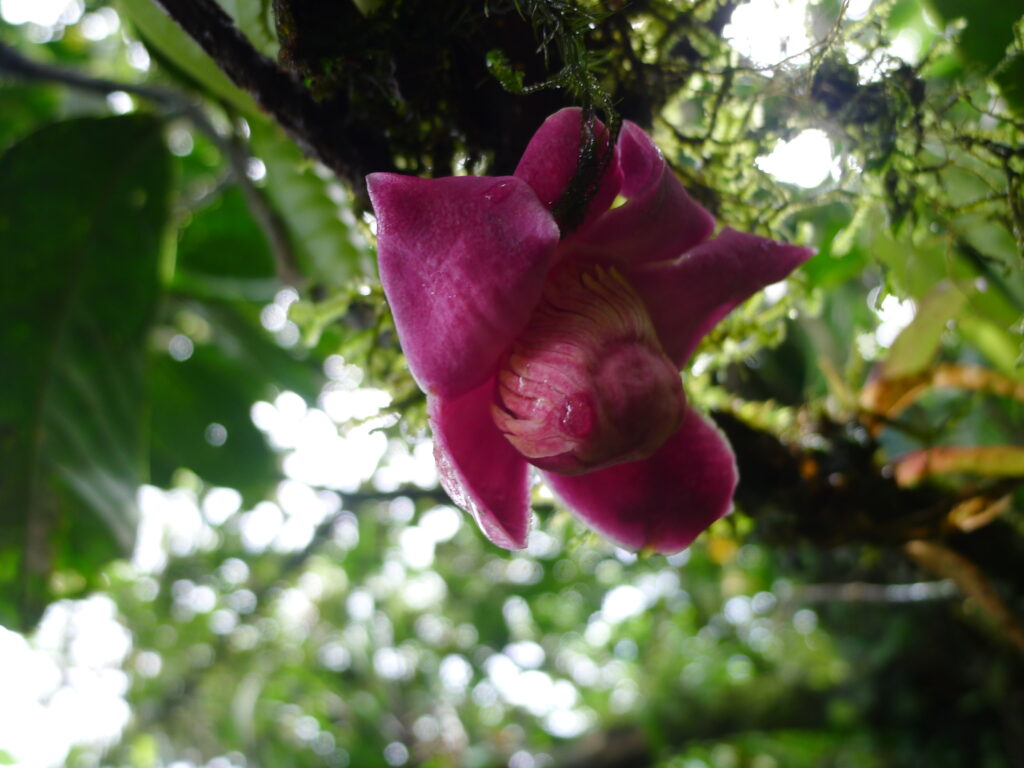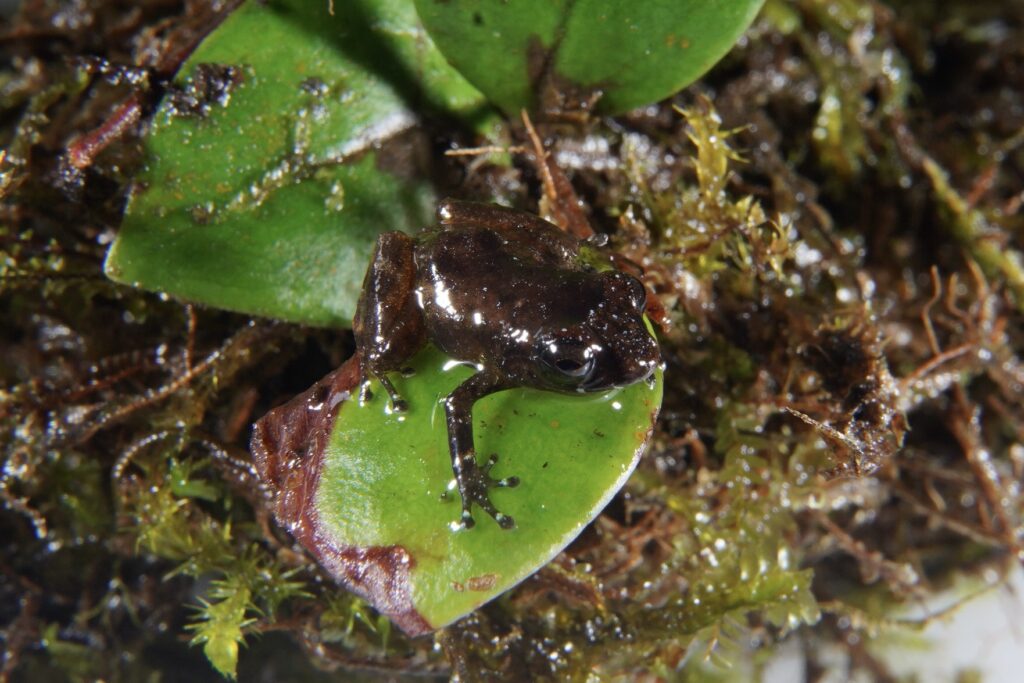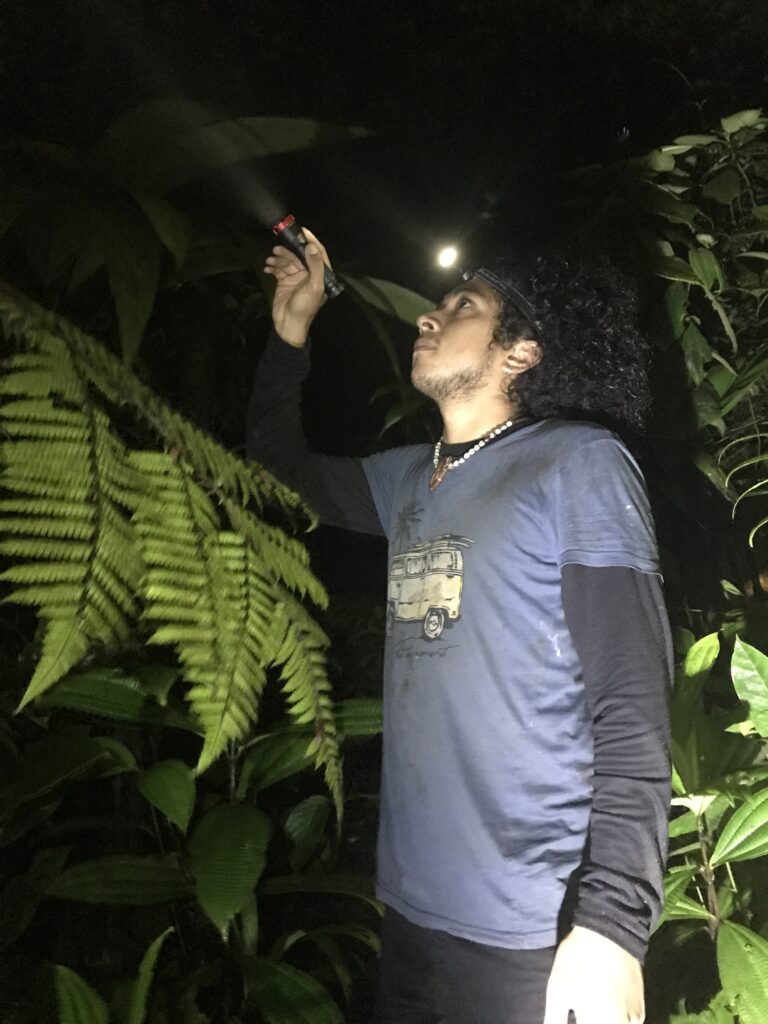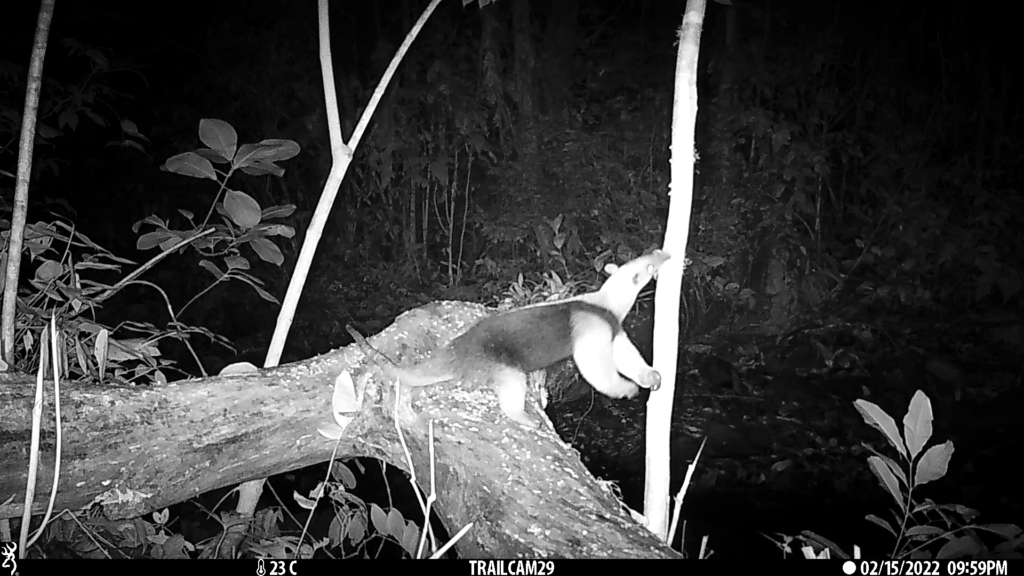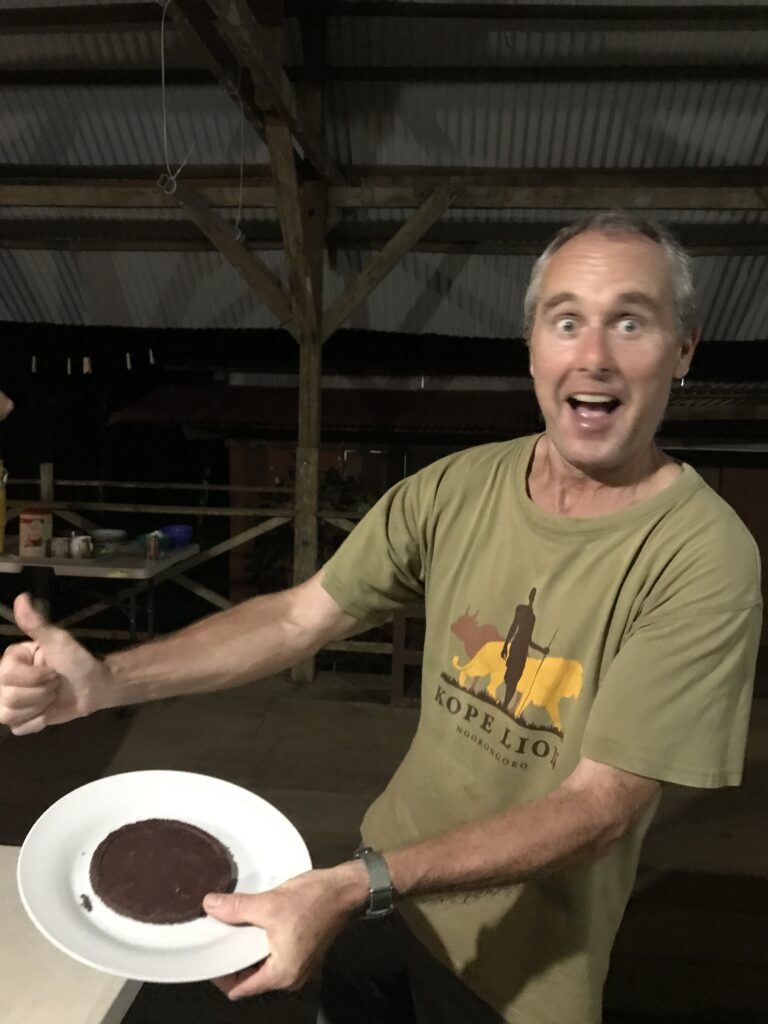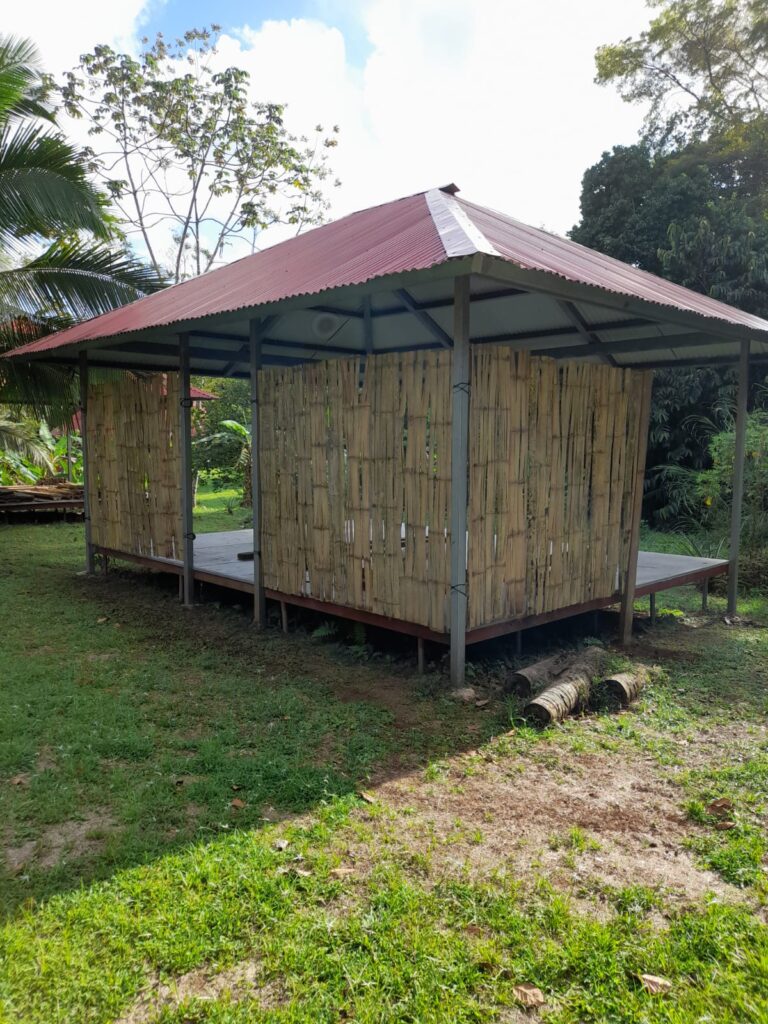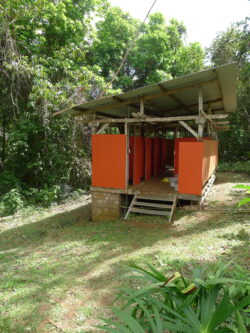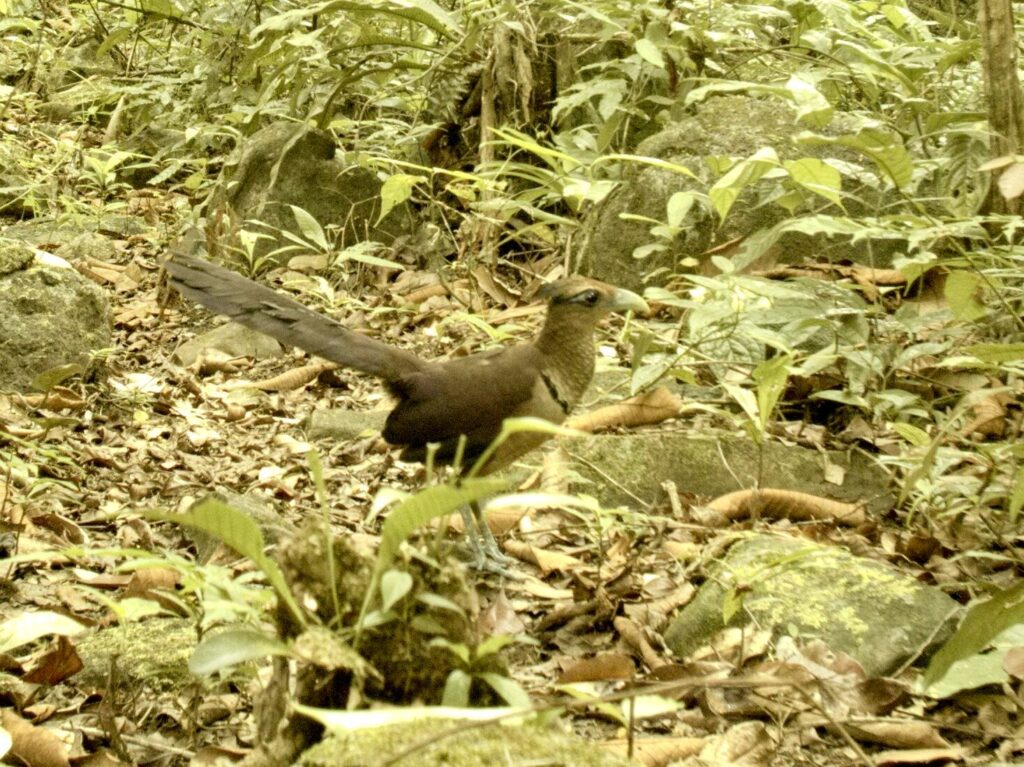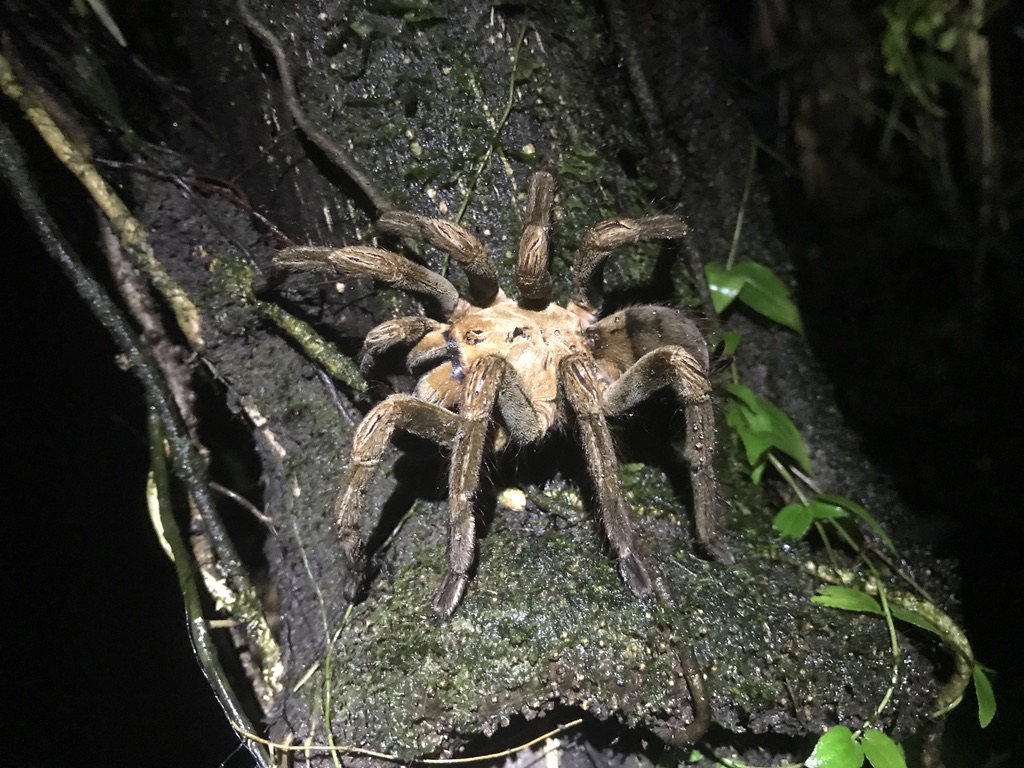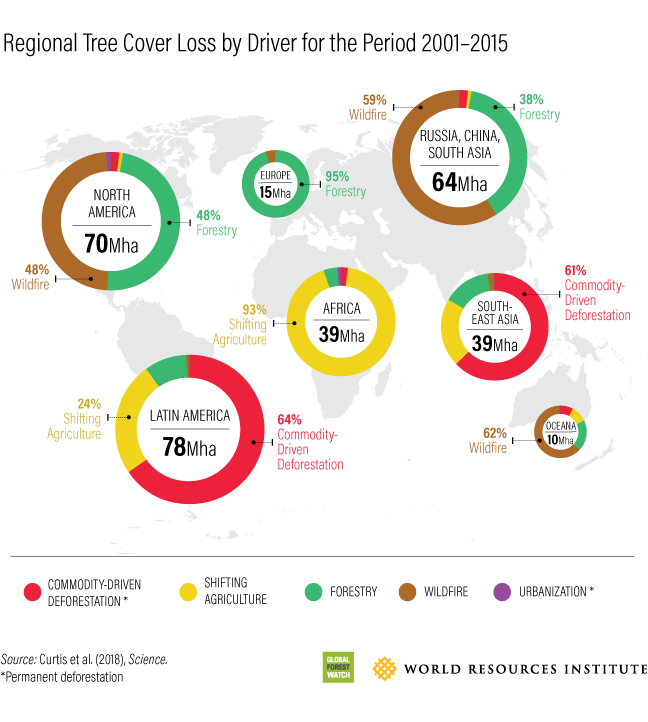In The Field at Cocobolo
Research
Cocobolo Nature Reserve had a flying visit from Ramon Dapena and Orlando Ortiz a botanist from University of Panama, for a quick exploration of Cocobolo’s flora. It turned out to be a bit of a whirlwind of discoveries. Plants were found in flower that had never been photographed before or that had never been recorded outside of specific ranges and some that were quite possibly new to science.
For instance the endangered Eschweilera jacquelyniae a Panamanian endemic was thought to only exist at high elevation on Cerro Jefe (about 30km away), but was recently observed at a site in Colon (Caribbean slope) suggesting it may be a little more widespread. It turns out that it’s also growing at the top of ridge in Cocobolo at about 700m a.s.l. within the cloud forest.
Similarly the endemic Anthurium kamemotoanum is also known only from Cerro Jefe where it grows above 850m. It is extremely rare, but you guessed it, it was also found growing at 600m here in Cocobolo. The researchers were amazed at what they found here in our special piece of paradise and hope to be back with more time on their hands to investigate properly. We will let you know when they do.
Cocobolo undertook a herpetology survey at the beginning of March led by Dr Abel Batista, one of CREA’s scientific advisors and the lead scientist on the recently described new ‘Greta’ frog Pristimantis gretathunbergae, featured in our January Newsletter. The week involved a lot of mileage, with the teams hiking up to the continental divide and down (1700ft gain in elevation) twice a day, once in daylight and once after dark. It’s no mean feat to juggle searching for amphibians whilst trying to negotiate the rugged slippery track that leads up to the ridge at 700m, even more so in the pitch black. But it was well worth the physical effort.
Although the team has some work to do to verify their findings the highlights of the week were 1. finding the “Greta” frog that would make an immediate range extension for this species 2. finding another Pristimantis that could be a new frog species and 3. Finding a Diasporus frog that could also be a new species 4. Hearing frog calls that were not immediately recognisable and need further investigation i.e. another expedition!
Dr. Batista is now doing detailed analysis of these frogs including DNA studies to see whether or not they truly are new to science.
A shout out to Erick Barría, a biology student from the University of Panama, who was able to obtain the potentially new Diasporus by climbing a tree at the crest of the continental divide (720m a.s.l), in wind and rain and in the dark, listening for it and being able to find it within a thick blanket of epiphytes. The frog is 1cm long at most (see pic above). Erick was so enthused that he came back a week later to try to find another one, which was needed to augment the data, which he did!!
Take a look on our Inaturalist page for some great images of the frogs and snakes that we recorded. Regularly documenting the species at Cocobolo is extremely important, particularly reptiles and amphibians that are so sensitive to climate change. We need to understand what is happening on the ground, in the forest, if we have a hope of diverting climate disaster. These surveys also give us a chance to support Panamanian students studying tropical forests such as Erick Barría, with whom we were very impressed for his knowledge, enthusiasm and dedication.
Monitoring
The last two months have seen regular inputs to e-bird with bird sightings and Inaturalist with all other observations. Our camera traps have been busy monitoring trails and have recorded jaguar, puma, ocelot and margay amongst a variety of other critters. Our social media has featured some great video clips from this wealth of data if you haven’t already seen them (follow us on instagram and facebook ). One highlight was a camera trap set on a sturdy log crossing a stream.
These can be important for terrestrial mammals to navigate across the environment especially in a hilly place like Cocobolo that has a lot of streams. It proved to be a great source of data with coati, tayra, ocelot, tamandua, opossum and rodent species all regularly moving across the log.
Camera traps are an incredibly valuable resource for us since they provide information on large animals that one would not be able to observe through walking through the forest. In addition, many animals are nocturnal making it even harder to observe them directly. Through camera traps we have been able to piece together the large mammal biodiversity of Cocobolo as well as terrestrial birds. Not only do camera traps provide us information on species presence they can also provide information on quantities, habitat use, habits and to some degree behaviour, that would normally be impossible through direct observation.
Cocobolo Field Station
Guests
After a long absence due to Covid we have finally welcomed our first guests back to Cocobolo. Peter Zivkov, a retired teacher who has spent much time at Cocobolo on field trips with his students, came back for a special visit, this time with with Debbi and Victor.
We spent time walking in the forest appreciating the intricacies of nature and relaxing at the main Rancho watching hummingbirds and tanagers flitting around the gardens. There was also a rare treat in store when Trev dished up homemade chocolate for the last night’s dessert. An involved process, he hand picked ripe cocoa pods, fermented the beans, dried them, roasted them and ground the beans to nibs before blending to make a delicious dark 95% chocolate treat. We are considering a future business, hold tight for ‘Chocobolo’!!
CREA is happy to announce that we are ready and looking forward to hosting many more educational and group visits at Cocobolo. Let us know if we can organise something for you.
Maintenance
The quiet time has had some benefits allowing us to carry out some refurbishments. The bathroom block has been smartened up. Rotten wood panelling was replaced, a tricky job to do around the bats that call the bathroom home but they seem to like the finished product.
Cheñin, our resident caretaker has nearly completed the new bamboo weather screen on one of the ranchitos. Leo, our gardener has done a great job caring for our orchid garden and planting up some native heliconias to enrich the garden space for both wildlife and our pleasure.
Recent sightings
The last few months have seen us spend a lot of time out and about around the reserve, sometimes working to keep trails clear from rapidly regrowing plants or fallen trees but most of the time to make observations. Setting and checking camera traps is a fairly time consuming task in itself but does have the benefit of taking you off to little visited corners of the reserve.
In one such outing, we were lucky enough to stumble across an ant swarm that had many ocellated and bi-coloured antbirds in attendance. It is always a pleasure to just stand and watch these frenzied, noisy gatherings but this time we struck gold and spotted a Rufous-vented ground-cuckoo. A much sort after prize that has never been spotted in the flesh at Cocobolo before. Other birds of note were crested guan, great curassow and tinamou all in abundance which is a great sign of an undisturbed forest free from human hunting pressures.
The resident pair of tropical screech owls that some of you will be familiar with have been sharing the bohio with us in the evenings. The female makes herself comfy on the rafters whilst the male brings her nice fat bugs.
We also found this very large, probably old, tarantula up at 700m in the cloud forest. You can see the condensation droplets on its legs from the mist that is heavy in the air. We have yet to find out what species this is, so if you know it please drop us a line.
Latest Journal Entries
Our journal entries can be found on our website but in case you have missed the last few here is an overview.
Lucy Hughes takes a look at delayed greening, an anti-herbivore defence mechanism that is widely found in tropical forests. Read here
Lucy Hughes recounts an adventure with the holy grail of Panamanian birds, the Rufous-vented ground-cuckoo. Read here
In case you missed it, Michael Roy writes about the events of 2021 that have impacted tropical forests. Read here
Other News from the Tropics
First some news from the tropics (news from Cocobolo can be seen below). Follow the links to find out more.
Tropical forests as key sites of the “Anthropocene”: Past and present perspectives
This article first published last September in PNAS is part of a special feature and investigates clues as to the effects of the Anthropocene on tropical forests in the past and present with the hope to understand what to expect in the future. Tropical regions, including ones that would naturally be forested, are home to an immense and diverse human population that continues to grow rapidly. What lessons can we learn from human history and our ancient interactions with these great forests? Read more here.
Tropical Forest Restoration: Let Nature Do Its Thing
In this study published in Science, researchers investigated 77 sites across North and South America and West Africa, including Panama. Interestingly many ecosystem services were found to recover quite quickly after a forest had been cut and used for anthropogenic use, and then left to regenerate. For example, it takes only 10 years for soil fertility to return and species diversity returns after 60 years. These are averages and in our experience at Cocobolo depend on many variables, such as the type of impact the area had during its use, the distance the reforested plot is to mature forests and continued impact such as from selected logging or hunting. Still, this is an interesting study and well worth the read. Read more here.
From Teak Farms to Agroforestry: Panama Tests Reforestation Strategies
Following the restoration theme, Panama, in a bid to meet its carbon emissions reduction targets set in the Paris climate agreement, aims to restore 50,000 hectares of forest by 2025. The government is currently using investment incentives for teak plantations which proponents say is win win for conservation and the economy, however critics point to the fact that replacing native forest with a non native monoculture does nothing to conserve Panamanian biodiversity and can lead to continued deforestation. One research project is looking at ways to restore tropical forest on degraded cattle farm land in order to boost biodiversity and improve forest hydrology, something that is very much at the core of CREAs work and ethos. The project also looks at silviculture techniques that could see more eco friendly high valued native trees planted in place of teak. Read more here.
Did You Know…..
Virtually all deforestation is driven by human activity. The biggest drivers of deforestation are agriculture — both industrial and subsistence — and cattle ranching. Much of this production is not consumed locally — instead it is sent to cities or overseas. That means consumers who may live far away from rainforests are usually at least partly responsible for the destruction of these beautiful and important landscapes.
